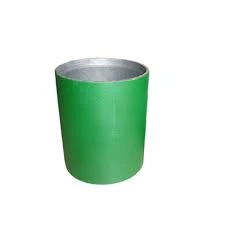- Afrikaans
- Albanian
- Amharic
- Arabic
- Armenian
- Azerbaijani
- Basque
- Belarusian
- Bengali
- Bosnian
- Bulgarian
- Catalan
- Cebuano
- Corsican
- Croatian
- Czech
- Danish
- Dutch
- English
- Esperanto
- Estonian
- Finnish
- French
- Frisian
- Galician
- Georgian
- German
- Greek
- Gujarati
- Haitian Creole
- hausa
- hawaiian
- Hebrew
- Hindi
- Miao
- Hungarian
- Icelandic
- igbo
- Indonesian
- irish
- Italian
- Japanese
- Javanese
- Kannada
- kazakh
- Khmer
- Rwandese
- Korean
- Kurdish
- Kyrgyz
- Lao
- Latin
- Latvian
- Lithuanian
- Luxembourgish
- Macedonian
- Malgashi
- Malay
- Malayalam
- Maltese
- Maori
- Marathi
- Mongolian
- Myanmar
- Nepali
- Norwegian
- Norwegian
- Occitan
- Pashto
- Persian
- Polish
- Portuguese
- Punjabi
- Romanian
- Russian
- Samoan
- Scottish Gaelic
- Serbian
- Sesotho
- Shona
- Sindhi
- Sinhala
- Slovak
- Slovenian
- Somali
- Spanish
- Sundanese
- Swahili
- Swedish
- Tagalog
- Tajik
- Tamil
- Tatar
- Telugu
- Thai
- Turkish
- Turkmen
- Ukrainian
- Urdu
- Uighur
- Uzbek
- Vietnamese
- Welsh
- Bantu
- Yiddish
- Yoruba
- Zulu
steel pipe coupling
Understanding Steel Pipe Couplings A Comprehensive Guide
Steel pipe couplings are essential components in various industries, serving as connectors that allow two or more sections of pipe to be joined together securely. They come in a variety of shapes, sizes, and materials, but their primary function remains the same to ensure a tight and reliable connection that can withstand pressures and environmental conditions. This article delves into the necessity, types, and applications of steel pipe couplings, shedding light on why they play a crucial role in piping systems.
What Are Steel Pipe Couplings?
A steel pipe coupling is a fitting used to connect two pipes. This connection may involve pipes of the same diameter or different diameters. Couplings can be constructed from different types of steel, including carbon steel, stainless steel, and alloy steel, depending on the application’s requirements. They are typically threaded or welded, with each method providing various advantages regarding installation and flexibility.
Types of Steel Pipe Couplings
1. Threaded Couplings These are the most common type of couplings, featuring internal threads that allow pipes to be screwed into place. Threaded couplings are easy to install and adjust, making them suitable for applications that may require future modifications.
2. Welded Couplings For applications requiring a more permanent connection, welded couplings are ideal. They involve welding the coupling to the pipes, ensuring maximum strength and reducing the risk of leaks. These are often used in high-pressure applications, such as oil and gas pipelines.
3. Socket Weld Couplings This type of coupling is designed to join two pipes at a right angle. The end of one pipe is inserted into the socket of the coupling, and the connection is completed with a weld. Socket weld couplings are common in piping systems that require high strength in confined spaces.
4. Compression Couplings These connectors utilize a compressive force to hold pipes together. They are often used in various plumbing applications, allowing for easy installation and disassembly.
steel pipe coupling

5. Flex Couplings Designed to accommodate movement and misalignment between pipes, flex couplings are crucial in environments where vibrations or ground movements are common.
Applications of Steel Pipe Couplings
Steel pipe couplings are used across multiple sectors, including oil and gas, construction, manufacturing, and wastewater management. Their durability and strength make them suitable for high-pressure environments, where failure is not an option.
- Oil and Gas Industry In this sector, couplings connect segments of piping that transport crude oil and natural gas. Their ability to withstand extreme pressures and temperatures is critical for maintaining safety and efficiency.
- Construction Couplings are fundamental in plumbing systems, HVAC installations, and fire suppression systems. They allow for the efficient and flexible assembly of piping networks in buildings.
- Manufacturing In manufacturing industries, steel couplings facilitate the transfer of liquids and gases between processes, ensuring seamless operations while maintaining the integrity of the system.
- Wastewater Management Couplings ensure that sewer and drainage systems function correctly, withstanding the corrosive nature of waste materials.
Conclusion
Understanding steel pipe couplings is vital for anyone involved in industries that rely on piping systems. These couplings not only provide necessary connections but also ensure the safety and efficiency of various operations. Choosing the right type of coupling based on specific application requirements can significantly impact the longevity and performance of piping systems. As technology evolves, we can expect further innovations in coupling design and materials, paving the way for even more robust and efficient solutions in piping applications. In summary, steel pipe couplings are indispensable components that play a critical role in maintaining the functionality of numerous systems across diverse industries.
-
Tubing coupling plays a significant role in the chemical industryNewsApr.03,2025
-
The Importance of Tubing Crossover in Various Industrial FieldsNewsApr.03,2025
-
The characteristics and important role of Tubing Pup JointNewsApr.03,2025
-
Characteristics and functions of Pup jointNewsApr.03,2025
-
Characteristics and Functions of Pup Joint PipeNewsApr.03,2025
-
Application of Coupling Casing in Various ScenariosNewsApr.03,2025







